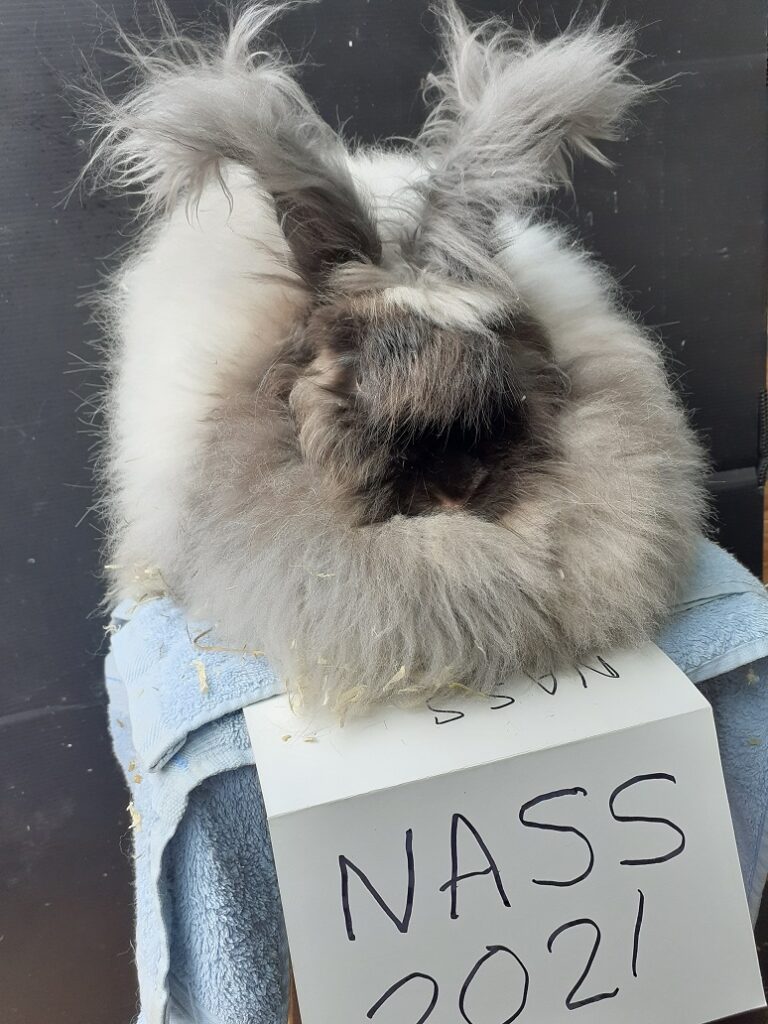
No colour is as difficult to assess at an early age as the Sable, a colour which is the subject of so many beginners seeking advice. The problem starts at birth. So often have I had a beginner on the phone, horrified because the eagerly awaited litter, both parents Sable, appear to be entirely of Smokes!
Those with more experience know that the chance of Sables producing Smoke is very remote. However, we all have to play the ‘waiting game’ with the colour. At around a week old, the babies begin to show a slight bronzing, and at six weeks old a distinctive brown begins to appear at the roots of the wool, but even then it is rarely possible to detect whether they will be Light or Dark Sables. We have to wait until they are about ten weeks old before this is evident. Then, the Dark Sables will still appear more Smoke-like with only a very slight browning, mostly on the belly. Those destined to be light Sables will have a more definite indication towards their eventual colouring. Colour seems to go on improving until the rabbit reaches maturity, say at about eighteen months old, and really, I think one of this age would do well as a show rabbit if the coat has grown to a competitive length, starting with the coat that follows the annual moult. However, if you try this with a doe, do let her have a litter before hand as a doe left too long has difficulty in conceiving.
Present day Sables have evolved from a line of Blues/Smokes carrying Sable in their ancestry, and came to light quite by accident early in 1980. Since then, with the aid of White interbreeding, they have become firmly established, and enjoy great popularity in the show pen and amongst handspinners. However, excessive use of White has produced two faults which need to be eradicated. The worst one is a tint white spot on either the upper or lower lip and occasionally on the chin. It was quite a shock to find that every exhibit that I judged in well supported classes at the 1988 Stock Show had this blemish. The only consolation was that the fault was not confined to my own stock! We must deal with this before it develops into a full blown ‘putty nose’, far more difficult to conquer. The second fault is in the coat, which should have the colour carried down much further towards the skin. Both faults are obviously due to too much white interbreeding, and I think two or three generations of Sable to Sable breeding should result in the elimination of both problems. Certainly, that is the way I shall be proceeding. I regard a white bred in a Sable litter just as influential as its Sable littermates in producing colour, often resulting in an entirely Sable litter.
The Dark Sable , in years gone by, was never regarded as a show rabbit as non breeder judges used to conclude that it was a rusty Smoke and penalised it accordingly. Nor is the wool sufficiently brown to enjoy and popularity of the Light Sable for handspinning. The dark one has always proved its worth in breeding and will do much in establishing a more solid colour.. Light to dark shade will prove to be a real asset in improving Sables without recourse to a White. Coat wealth, furnishings and general Angora quality is already well established. Once you have bred stock free from these faults, do not be afraid to inbreed and so spread perfection throughout your stud rather than outcross to stock still carrying faults.
Recently, I found among my raw wool stocks accumulated over the years, some light Sable wool harvested in 1965 (confirmed by the date of the newspaper in which it was wrapped). The shade of Sepia was not nearly as good as that of the present day, having a faint yellow tinge, but the colour was carried much further down the wool.
A concentrated effort by all Sable enthusiasts will eventually result in perfection.
Written in 1989 by Mrs B A Pratley Willbank Stud